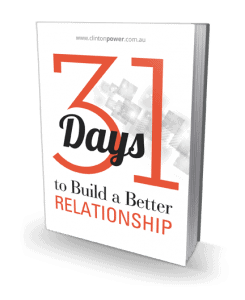Asexuality: The Misunderstood Sexual Orientation
Almost everyone is aware of the difference between heterosexuality and homosexuality, and most people know about bisexuality too. Some of the more up-to-date have heard of pansexuality. But have you heard about a fifth sexual orientation? The one that means someone doesn’t have a sexual attraction at all?
The lack of sexual attraction has become known as “asexuality,” and has only been recognised in queer circles for about a decade. Despite that delay, it’s not a rare condition—many researchers estimate that the prevalence of asexuality is around 1% of the population or about 70 million people. In his book Understanding Asexuality, author Bogaert attests that it is a higher percentage of adults.
So what exactly is asexuality? And what does it mean to be asexual?
What is asexuality?
Asexuality is a sexual orientation—or a lack thereof. Basically, asexual people aren’t sexually attracted to anyone.
In The Invisible Orientation, author Julie Sondra Decker outlines what asexuality is, counters misconceptions, and puts asexual people’s experiences in context as they move through a very sexualized world.
To clear up some of the most common misconceptions, Asexuality is not:
- a low sex drive. Asexual people can have a sex drive or lack one, and some asexual people masturbate and/or have an active sex life. Asexuality has nothing to do with someone’s libido and is actually related to their experience of attraction to other people.
- the inability to become aroused or orgasm. Asexuality is not a medical problem and does not need to be cured.
- the inability to experience romance. While some asexual people also have no desire for a romantic relationship, many want and/or have successful, happy romantic partnerships.
- sex repulsion. Some asexual people are repulsed by sex, but just as many are not.
- naivety, immaturity, or virginity. People are not asexual due to inexperience.
- a result of trauma. Asexuality is an orientation just like any other, and framing it as the result of assault or abuse is not accurate. Even if someone asexual has a history of sexual and/or interpersonal trauma, it doesn’t mean that that is the cause of their asexuality. Similarly, asexuality is not the result of anxiety about sex.
- the need for celibacy. Celibacy is the conscious choice to abstain from sex, for any of a variety of religious or personal reasons, but choosing celibacy does not mean you’re asexual. Celibate people often still feel sexual attraction and have a sex drive.
- the desire to never have children. Many asexual people form happy families in which to raise children, whether those children are biologically related to them or not.
- a lack of warm feelings at all. Asexual people are still human and experience love, affection, and every other emotion.
- inherently a problem. Most asexual people are perfectly fine with their orientation and have no desire to be different. When problems do occur, they are usually the result of a culture that doesn’t understand the issue.
Asexuality is, ultimately, an umbrella term. For example, one type of asexuality called “demisexuality” is the lack of sexual attraction to anyone with whom the person is not very emotionally close. They might be attracted to their spouse or long-term partner(s), but virtually no one else. There is also “gray asexuality,” which is when someone isn’t entirely asexual, but it’s still very rare for them to be sexually attracted to anyone.
How do you know if you’re asexual?
Asexuality is a particularly hard orientation to pin down because the definition of the sexual attraction itself is so nebulous and unclear.
You are, ultimately, the only person who can decide what your sexual orientation is, because it’s different and unique for each person. Even when you decide on one, that label can always change as you grow.
However, people who are questioning their sexual orientation often value the experiences of others in their decision, so here are some signs you may be asexual:
- you see someone who catches your eye, your thoughts usually don’t turn to sex
- you find certain people cute or pretty, but not really sexy or hot
- naked bodies generally don’t cause you to become aroused
- you don’t often fantasise about sex
- when you watch porn, you feel like an anthropologist studying an unfamiliar culture
- you think that the statistic that people think about sex every three seconds sounds unreasonably high
- the way other people talk about sex seems way overblown to you
- you make interpersonal and/or romantic connections and have very little or no desire to have sex with the other person
- alternatively, you only feel sexual desire for emotionally close friends/partners and none for celebrities or strangers
- you have a tough time pinning down your sexual orientation at all
- you engage in sexual activity just to please your partner or because you feel like you’re expected to
- sex just isn’t an important focus of your life and you’d rather talk or cuddle
If you think you might be asexual, one thing you can do is schedule an appointment with a therapist. Figuring out your sexual orientation can be stressful and confusing, and a therapist can help with the process. You don’t have to do this alone!
When should you tell a potential partner you’re asexual?
Just as all decisions about sexual orientation, it’s up to you. Some people disclose it on the first date, while others wait until it becomes more urgently relevant. While honesty is generally the best policy in relationships, a disclosure is all about your comfort.
What do I do about sex if my partner is asexual and I’m not?
There are a few options when it comes to partnerships in which one person is asexual. Here are some common collaborative arrangements:
- The non-asexual person doesn’t mind, so they just don’t have sex. This may be easier for non-asexuals with a low sex drive.
- The asexual person doesn’t mind, so they have sex. It may or may not be less frequent than with other couples.
- You mutually agree to be polyamorous or have an open relationship. This means that you can both seek out other partners for sex or romance, and the non-asexual person can get their sexual desires fulfilled.
If you think you may be asexual, you might have a hard time pinning down your orientation and dealing with the opinions of others, but accurately knowing yourself is always worth it.
When in doubt, call a therapist. There’s no shame in getting help.
Are you an LGBTQIA person who is struggling with coming out or understanding your sexual orientation?
If so, contact Sydney Gay Counselling on (02) 8968 9323 to find out how we can help or book an appointment online today

